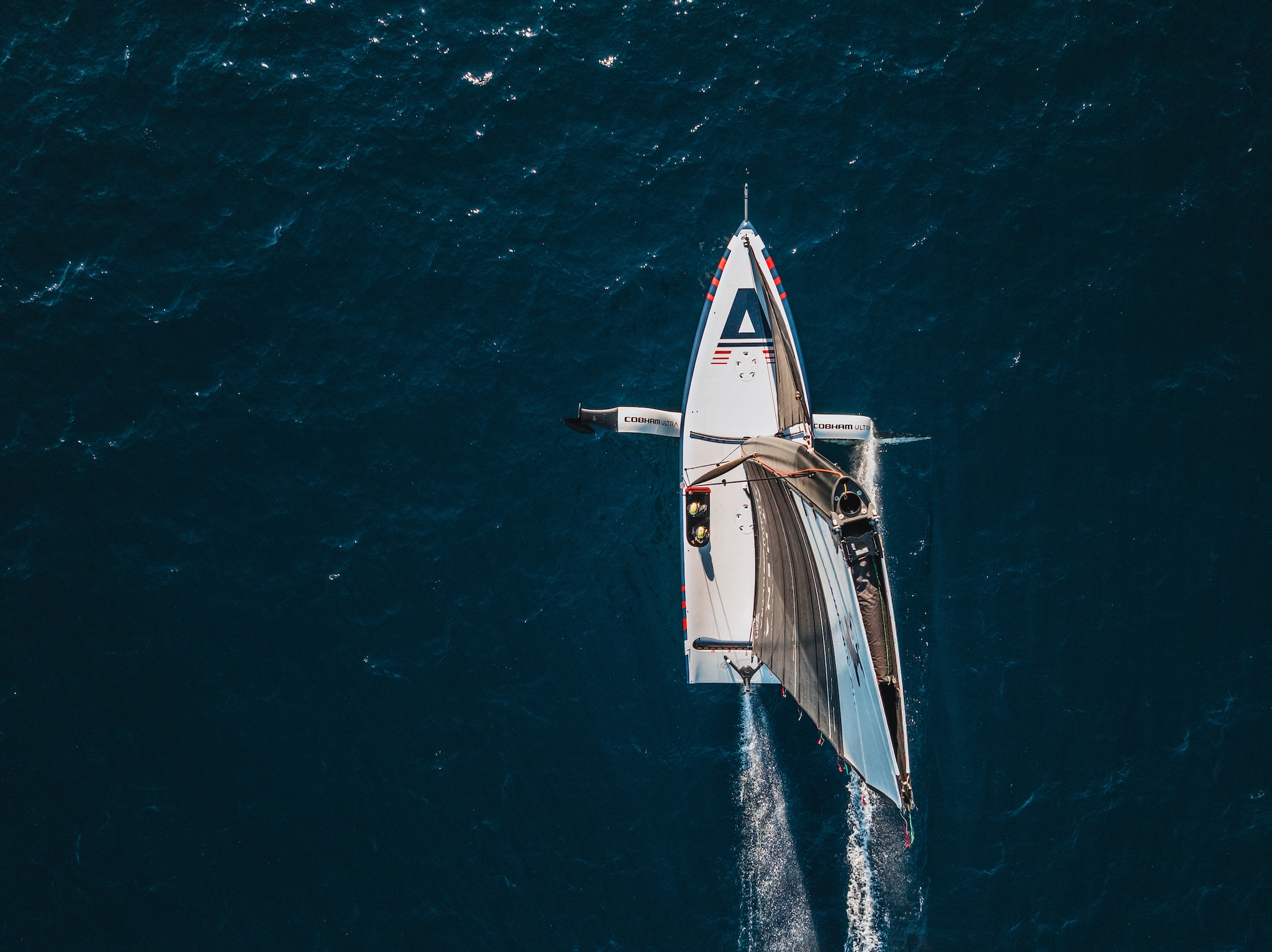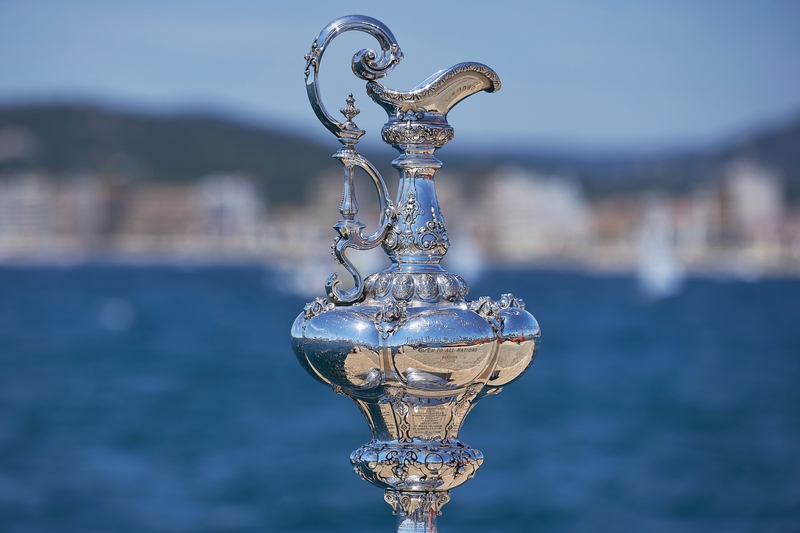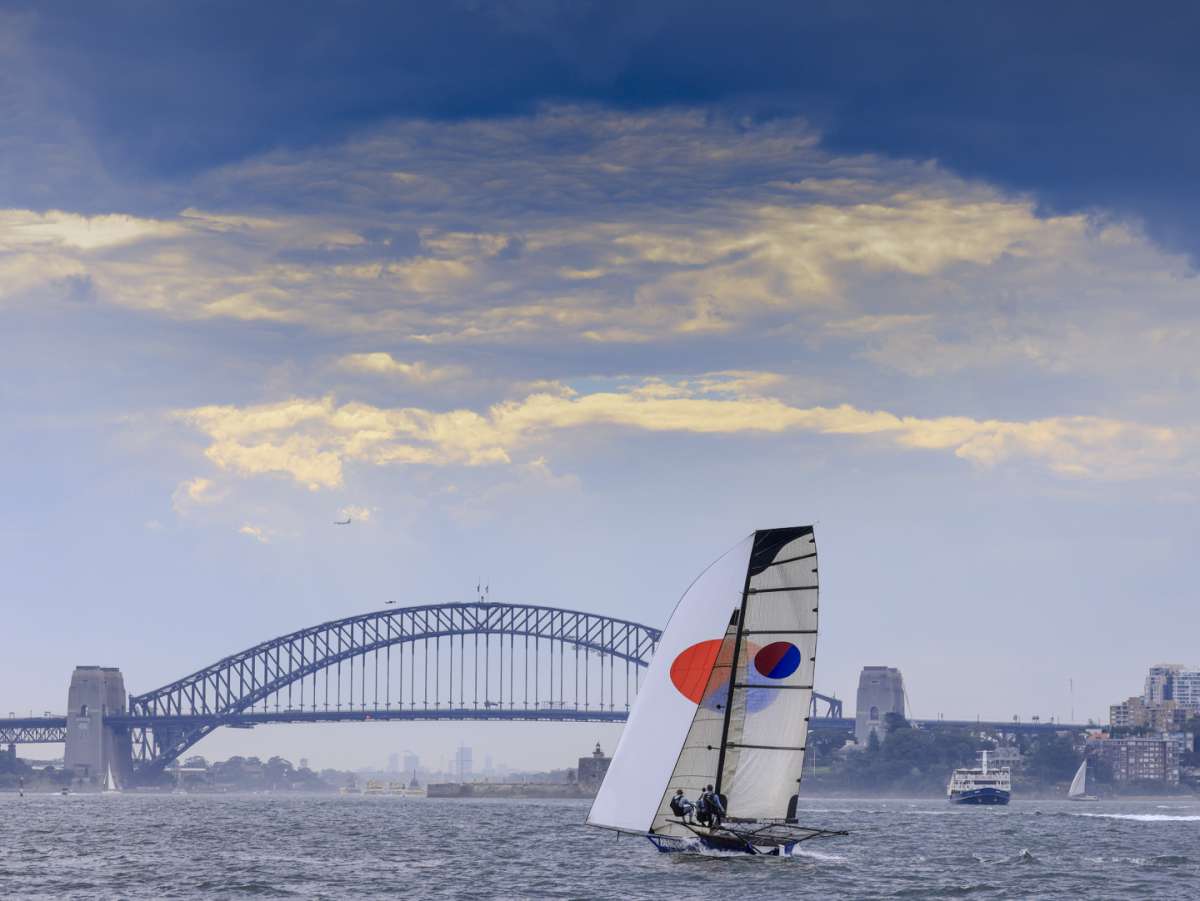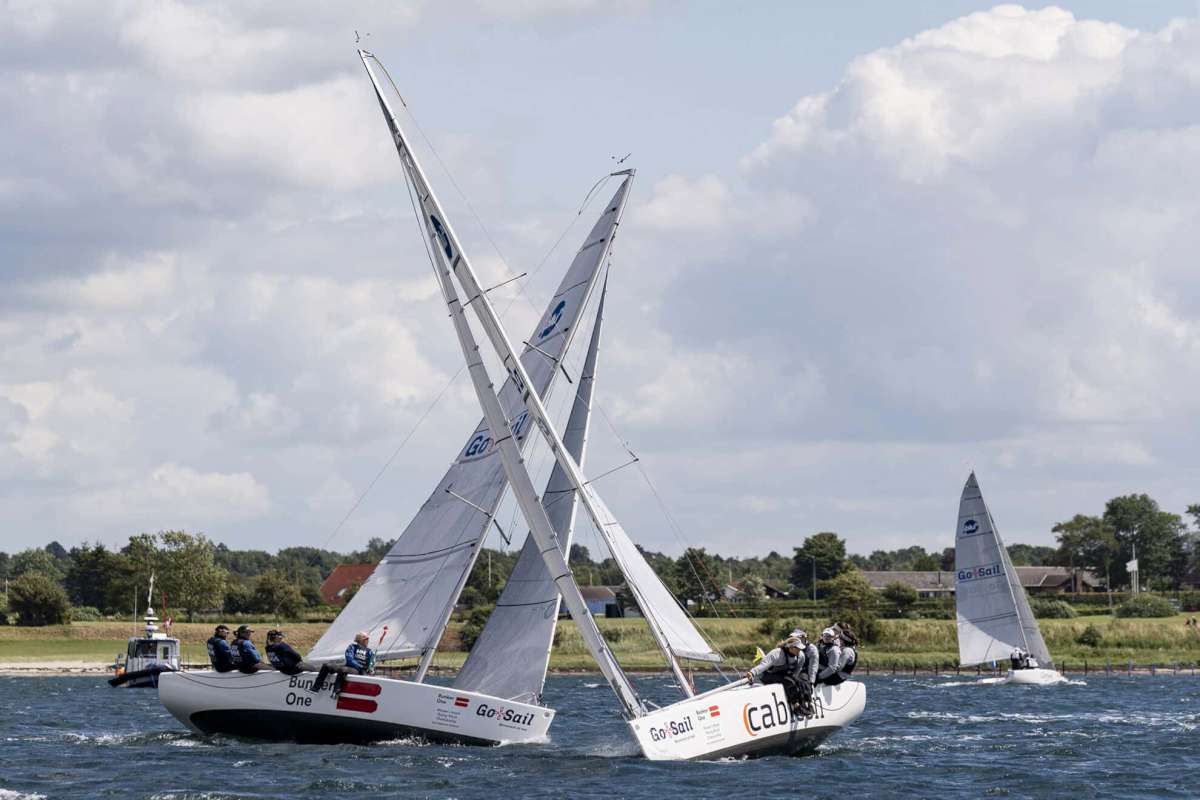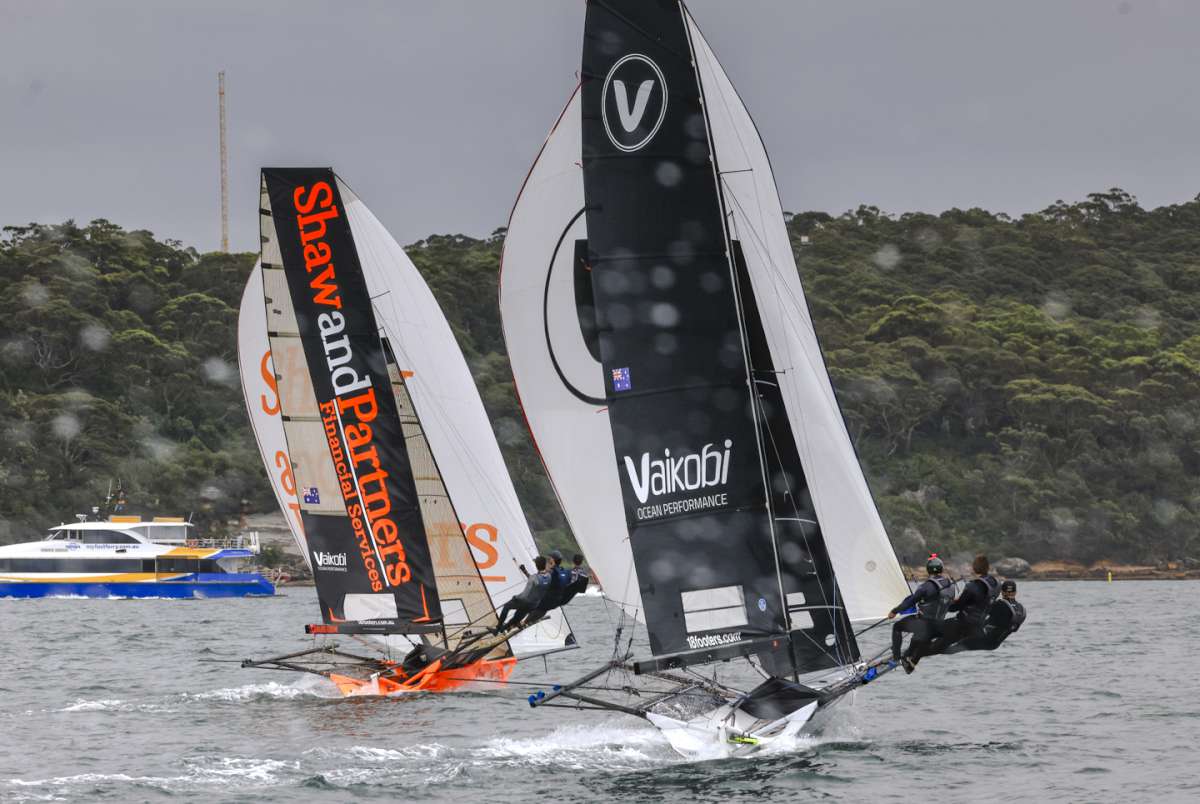Having good food on passage is most important in order keep energy levels up as well as morale, especially in adverse weather. But it also adds another dimension to the enjoyment of being on the ocean waves.
Provisioning is actually very straight forward, if not time consuming and laborious. It is just the thought of it that can be daunting. Although it is the single biggest aspect of cruising that I do not look forward to, the whole process does become rather painless once started. We are familiar with stocking up our cupboards at home,
so why would a boat be any different?
For those of you who have lived out on a farm or a station in more isolated parts of Australia, provisioning for a long passage will be a bit of a doddle. For those of you who pop down to the shop on a daily basis, you could practice at home by shopping once a month and seeing how you go.
Aspects to consider
There are many dimensions to provisioning: from what foods to buy, how much of each item to buy, how to store it, where to store it, how to keep track of stores on board, how to get the stores from the shops to the boat and where to buy what in a foreign country. There are also the associated concerns of having enough gas (propane) to cook with and how much waterline can you safely ‘sink’ before it affects the sailing and stability of your boat. Although this should be a concern for all of us, multihull people need to be a lot more aware of this as overloading has a more significant impact on the vessel.
Listening to others for advice is always a good thing, but make sure you are all on the ‘same page’. Provisioning for nine months out in the Indian Ocean, we were advised to take all we needed as there was nowhere else to provision.
This might be true if you only eat specific brands and types of foods; however, half the fun for us in our cruising has been the local cuisine.
Of course every country in the Indian Ocean we visited, like the Andaman Islands, Sri Lanka, Maldives and the Seychelles, provided many opportunities to provision. The one exception of course in the Indian Ocean is the isolated atoll of Chagos. One Australian yacht did arrive at Chagos asking where the local shops were!
Do your homework before you leave!
If you are sailing along the usual popular cruising routes, be aware of the impact so many yachts have on the local communities, sometimes there is only enough food for the locals. Never take more than you need, as opposed to what you might want.
Every year well over 100 yachts depart the Americas to head out into the Pacific. The Marquesas Islands are usually the first stop after the mammoth sail from either Galapagos or the Americas. Fresh food is limited, but there is enough for everyone.
Taioha’e, Nuku Hiva, is the main provisioning port and we had to make a very early start at 0430 hours to get our provisions. We found more than enough fresh food in all of the islands in the Marquesas. In 2012, we heard rumours of fuel shortages resulting in panic buying. There was a short wait for some while supplies were replenished, but no-one missed out.
Such places are well aware of the busy season and take measures to meet the increased demand, as servicing the yachts is a valuable income stream.
Other countries like Vanuatu and some villages in Indonesia may have more of a limited choice of fruit and vegetables, but it is of no inconvenience to us to adjust our eating habits for a short period of time. It is a great challenge and a lot of fun finding new recipes and substituting ingredients in others to accommodate our supplies.
We have found the best markets in the world outside of Australia. On departing the Galápagos Islands to undertake a three week passage to the Marquesas, our last port of call at Puerto Villamil, Isla Isabella, we were concerned about the lack of fresh food in the village.
On asking around, a local gentleman took us and representatives from two other yachts up into the hills to meet a market gardener. We walked around in his company, shopping for our fresh fruit and vegetables.
Not only was it a wonderful experience, it was a good price. Everyone left happy as our local guide and the market gardener made some extra money and we were well stocked.
The cost of food is also an important consideration for many of us out there; but we do have to marry this up with the cost of fuel. Is it a false economy to load the boat with provisions, only to overload the boat, sink the waterline and pay more for fuel motoring in calms?
We motored significant distances in both the Indian and Pacific Oceans and got more savvy with provisioning as we went along. Our rule of thumb is: if it is cheaper than what we can buy at home, then it’s a good deal!
There has also been much written about safety at sea and overloading boats. You will sail slower and therefore may not be able to out run storms plus your boat may not respond in heavy seas like she should. This is very much food for thought; excuse the pun.
Attitudes towards food
Being on board with others, including your partner, highlights interesting aspects of human behaviour with regards to provisioning. It is wonderful to have a ‘treats’ locker but how do you accommodate everyone’s eating habits?
After all, there is only so much chocolate you can take on a long passage. Chocolate keeps well stored below the waterline, by the way!
Whilst I prefer to ration my treats, Peter prefers to eat what he wants then go without when supplies run dry. As you can imagine, that difference evoked some interesting discussions. As I do the stowing in the boat, I now hide our treats and ‘discover’ them when all others have run out.
Having crew on board adds another dimension as you only really find out about your companions when you go to sea with them for a period of time. Boat owners have complained of their crew secretly eating their favourite stores.
That is pretty tough when you are out in the middle of nowhere and you come off watch to eat something you have been thinking about for three hours. Especially if it has been a challenging watch. During a long ocean race one new crew member, whose bowl of dinner got saltwater in it when a wave washed over us, tipped the whole lot over the side and ask for another serving. He had not noticed the rest of us drain the water off and keep eating. Needless to say he was not happy with the response he got and went without dinner.
Ocean life is a steep learning curve!
What to buy?
What stores to have on board is a personal choice.
In the early days of passage making, the items Peter could not do without were chocolate, coffee, red wine, parmesan cheese, butter and sugar. We stocked up with items like shampoo, toothpaste and washing powder on our first departure from Darwin heading up to SE Asia, only to find the same items cheaper everywhere we went in Indonesia and SE Asia for half the price.
One yacht we met in Langkawi arrived in the isolated atoll of Chagos with the whole floor of their 32 foot yacht three deep in cartons of beer. Another yacht departing Phuket for the Mediterranean via the Red Sea were concerned about being able to buy wine so they had a bladder installed in one water tank, purchased many cartons of their favourite wine and poured it into their tank so as to have it on tap! Apparently it kept well and cool as the tank was below the waterline.
Including treats in your provisions is probably one of the most important inclusions for a variety of reasons. Along with your favourite items, having high energy bars or drinks, protein bars, instant puddings and
the like can provide energy and comfort in the onset of bad weather.
I shared a taxi to the supermarket in Panama with a French lady who sailed with her husband and four teenage children around the higher latitudes all the way down to Antarctica in their 32 foot yacht. I could not fathom how she provisioned for her family for months on passages and where she stored it all. She did say they ran out of propane in the southern ocean and had to make do with what they could for two weeks.
She had lots of chocolate hidden away which she said was her saving grace in keeping the children happy. An alarm was set for 1600 hours each day when they would all get one square of chocolate!
Amounts of specific stores you wish to carry can be worked out from any catering sources. Lin and Larry Pardy’s book ‘The care and feeding of the offshore crew’ (Penguin Books, Canada 1980) is a little outdated in some respects but it is an excellent starting point on all aspects of provisioning.
Your own experience at home will lead you to sound conclusions. Some people have a vague idea of how much of a certain item they need, while some will plan a menu for X amount of people for up to six months.
We tend to have the ‘suck it and see’ approach and hazard a guess and make do. Other yachts we have met do the full planning and ration drinks and snacks according to the daily menu with no deviation, including the amount of alcoholic drinks they can have at sundowners!
As clearing out from a country often entails doing so at a major port, access to good provisioning sources is not a problem. All such places we have visited throughout SE Asia and the Americas have had well stocked supermarkets, including western foods, which of course are more expensive. There are often similar local products which are cheaper and excellent substitutes.
Keeping track of stores on board
Storage of your provisions can be a bit of a challenge, not only finding places to put things but also remembering where you put them!
You generally remember where you put things at home in the cupboards, so why should a boat be any different?
However our memory is often a moveable feast so having a stores list and location in the boat can be helpful. A good reference on how to do this is a book by Dottie Haynes (‘Provisioning: bowsprit to transom’. Goldberry Publishing, Washington State, USA, 1994) which is a fabulous starting point. It is very thorough.
A list of stores becomes really handy when you are close to running out, so you can adapt the daily menu. Technology has really changed the face of cruising where all the information we require is now at our fingertips. Learn how to use computer spreadsheets.
We had a dedicated pantry in the saloon that we kept topped up from other storage areas around the boat.
Both the Pardy book and Dottie Haynes’ book provide excellent tips for storing of fresh food to prolong life. Most commonly known is that onions and potatoes (and other root vegetables) do not play well together so keep them in separate locations.
Herbs can be frozen in oil which maintains the flavour and does not dry it out. Fruits (remember tomatoes are a fruit) give off ethylene, which is a ripening agent, so keep it away from vegetables.
Pack vegetables loosely in the fridge as the closer they are the quicker they will rot. Plastic baskets are excellent to use in the fridge for storage.
Pickling foods like asparagus and capsicums is a fantastic way to add to your stores on long passages or long stays in isolated anchorages.
Final tips on provisioning
Plan to have some instant meals accessible in case of adverse weather to keep energy levels up.
A thermos with a wide mouth is handy on board for slow cooking rice and having a hot readymade drink in the cockpit for night watch.
As far as carrying alcohol on board, label bottles with boat name so that Customs officials do not want to take them to sell. We put our gin in water bottles in the fridge, carefully labelled of course so we did not get a surprise on taking a swig from the bottle!
Some people like to precook and freeze some meals before departing on a passage. Although this saves time in the galley in case of sea sickness, it does leave you a little exposed if the refrigeration fails.
We like to prepare our first two evening meals before departure as this gives us time to settle into a passage.
It stands to reason to shop at the local market rather than supermarkets, as they offer the freshest food that has not been refrigerated and hence lasts longer.
Provisioning from a marina or at least a dinghy dock is easier than from the beach. Plan ahead and do make the whole process as easy as possible.
It is a good idea to unpack any items that come in cardboard packing in the cockpit and remove it from the boat as this packing often holds cockroach eggs and other bugs.
Good airtight plastic storage containers are great for dry supplies as they stop weevils from spreading. The worst weevil infection we had was from rice we purchased in Darwin. It amazed us that weevils can get through almost all plastic packaging, except for powdered milk.
We spent our first passage taking the weevils out of the flour before baking bread. Other cruisers would pour milk over their cereal and wait for the weevils to float and then skim them off the top. Skim milk takes on
a different meaning!
It was our first and only weevil infestation in ten years.
Cheese that you buy in sealed plastic packaging keeps well in the bilge for four months. Semi-matured cheese ripens beautifully. The oil leaks out from the cheese into the packaging, but all is required is to drain the oil and enjoy the cheese.
Buy eggs fresh from the market that have not been refrigerated and they will last for two months. We stored ours in plastic egg cartons and turned them every other day. Store herbs in a zip-lock bag in the fridge and use a straw to suck the air out before you seal the bag. Works a treat!
Many places will cryovac meat for you which will then last well. Some yachts now have their own vacuum sealer for most of their food, extending the life of food items significantly.
Many yachts have a small herb garden on board.
Bubble wrap and newspapers are excellent for wrapping pumpkins, carrots and cabbages when storing them outside the fridge.
Small plastic trays hanging in the tropical sun are great for drying bananas and tomatoes.
All food from the market can be washed in a weak solution of water and bleach. You really have to ensure it is perfectly dry before storing it away.
All in all, relax about provisioning and enjoy the new possibilities. If you get it right the first time, you are very fortunate.
Remember that your glass is always half full, it is the contents that are important!
Sign up to receive Cruising Helmsman every month: click here to subscribe.





